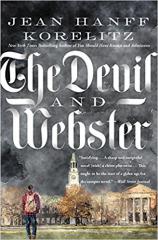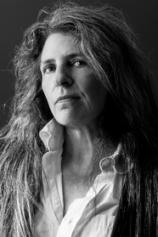Reading Group Guide
Discussion Questions
The Devil and Webster

1. Naomi Roth, the first female president of Webster College, was promoted to her role in part because of her handling of an on-campus crisis surrounding a transgender student. What was it about her leadership during that scandal that appealed to the trustees, do you think? Were the qualities that got her the role the same ones she would ultimately need as president? Why or why not?
2. What parallels do you see between the Radclyffe Hall problem and the protest at the Stump? If you were in Naomi’s shoes, as the president of the college, how would you have solved each of these crises?
3. Talk about Naomi’s relationship with her only daughter, Hannah. How do you see their relationship changing over the course of the book? What mistakes did each of them make? What could, or should, each of them have done differently? Does Naomi’s role as a single mother complicate her role as a college president, or vice versa?
4. How does Webster’s history of racism and privilege factor into the current-day events of the novel? What role does the Native American conference play in the narrative? Is it possible for a school like Webster to reinvent itself and move fully into a progressive future? To what degree can a troubled history be erased or written over, in any institution? Are “good intentions” enough?
5. Much of the story revolves around the fate of Professor Nicholas Gall, yet he is almost completely absent from the action of the book. Why do you think Korelitz made this decision?
6. Why do you think Omar Khayal becomes the leader of the student protest? What draws other students to him? How do your feelings about him change over the course of the book?
7. Because of Naomi’s professional role, she has access to a lot of secrets that many other characters do not. Does having this broad, full knowledge give her the clearest-eyed perspective on the events of the story? Why or why not? Is there anything to which she remains blind?
8. When Omar and the other students begin the protest, Naomi sympathizes with them; she has a long history of personal activism, of “speaking truth to power.” What is different now that she herself is “the power”? Do you see parallels between Omar’s rise to leadership and Naomi’s? Who would you argue is ultimately the character with the most power by the end of the book?
9. Many of the characters in this novel are focused on truth, righteousness, and justice. How do you see the role of these principles playing out in the story? Do these ideals help, or hurt, the characters as they make life-changing decisions? Talk about the different ways that “truth” shapes the story.
10. THE DEVIL AND WEBSTER ends with a surprising and powerful twist. At the end of the book, do you believe that there was a villain in the story? If so, who would it be, and why?
The Devil and Webster
- Publication Date: March 20, 2018
- Genres: Fiction
- Paperback: 368 pages
- Publisher: Grand Central Publishing
- ISBN-10: 1455592374
- ISBN-13: 9781455592371








